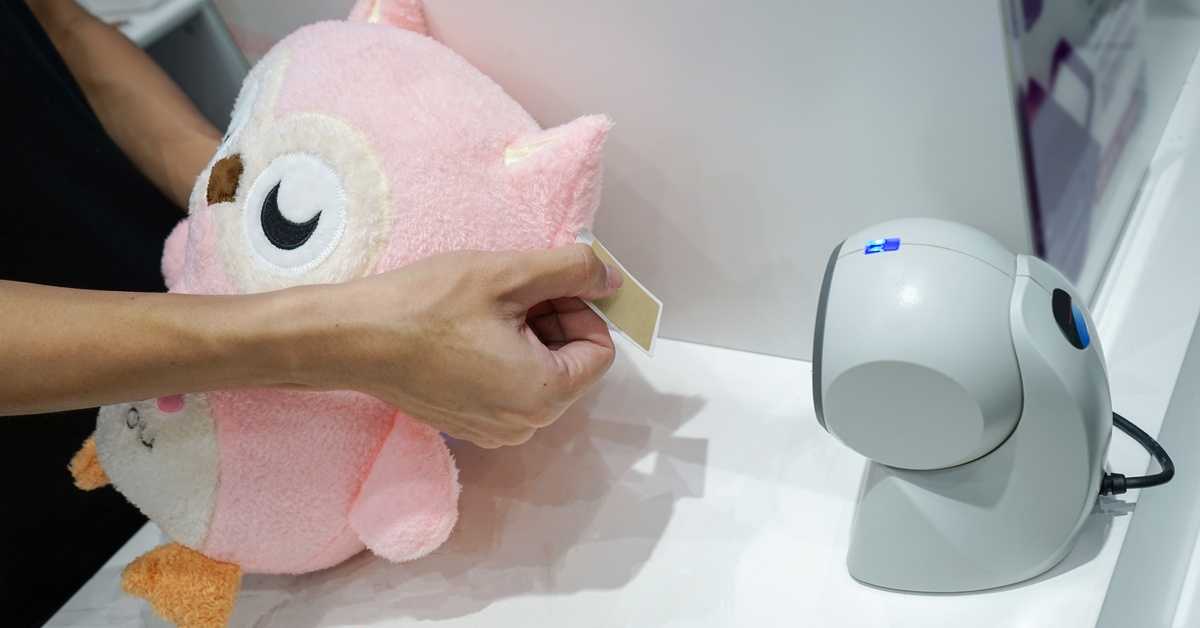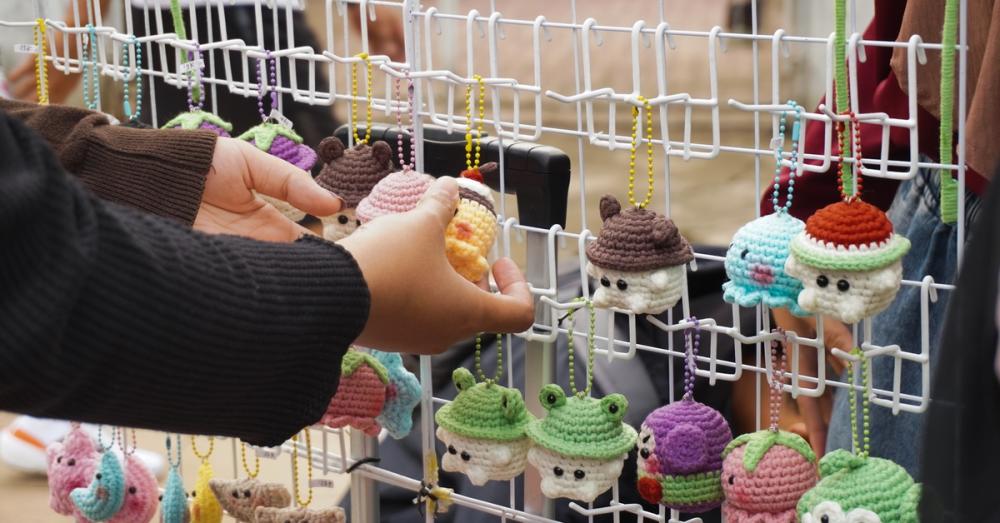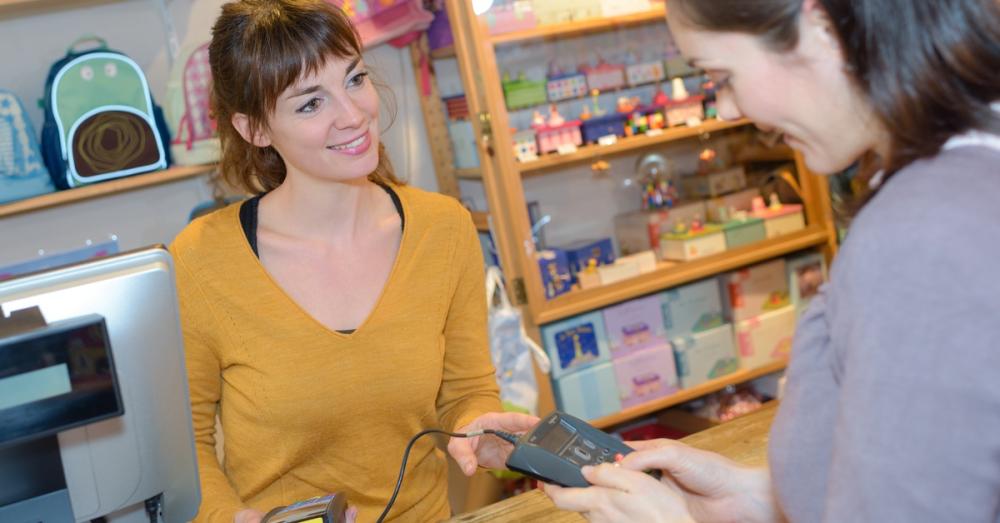
Driving sales for your business starts with creating a design that appeals to a wide audience. With an organized store layout, you’ll be able to encourage customers to make purchases they may not have thought of buying when they first stepped into your store.
Your point-of-sale (POS) machines are a great area to place seasonal, promotional, or other incentivizing merchandise to catch your customers’ attention. Before you let your customers finish their transactions, find out how setting up a point-of-sale toy display could increase sales with these tips.
The Power of Point-of-Sale Displays
Point-of-sale displays grab attention in several ways. First, they occupy a high-traffic area that every paying customer passes through—the registers. Second, they create a sense of urgency, as customers are already thinking about completing their transactions. Lastly, their proximity to the register keeps the decision-making simple and encourages immediate action.
Because of these incentives, many business owners will place items like snacks, drinks, or small household items that all customers will want to have. By putting toy displays in these areas, you could catch the attention of parents and guardians who shop with their little ones.
Capitalizing on Impulse Purchases
Impulse purchases happen when customers see something appealing that they weren’t planning to buy. For children especially, brightly colored and fun-looking toys are irresistible near checkout areas. Parents are more likely to buy a toy for their little ones as they’re at checkout, so be sure to display these items at your registers.
Creating a Convenient Shopping Experience
Customers value convenience, and your POS toy display can contribute to that by offering thoughtful, easy-to-grab items. By laying out toys in an organized and visually appealing way, you make it simple for them to justify an extra purchase. Choose small toys and place them strategically on the register counter to simplify their overall shopping experience.
Selecting the Right Toys for Your Point-of-Sale Display
Once you set aside space for a point-of-sale toy display, the next step is to choose the right toys to feature. Not all toys perform equally well in this space, so don’t fully transform your registers into the toy section of your store. Choosing the right gadgets and plushies for this space can appeal to a broader range of customers and drive sales effectively.
Small and Affordable Toys
Point-of-sale toys should be small, affordable, and easy to add to a shopping basket. Compact toys like keychains, squishy stress balls, or miniature cars often perform well because they’re practical and fun. These items are also popular across different age groups, which makes them a versatile option for any business.
Eye-Catching and Seasonal Products
Seasonal toys and those that incorporate bright colors or fun features can make your display more dynamic. Stocking glow-in-the-dark items during Halloween or water toys in summer aligns with the needs of the season.
For year-round appeal, stock up by buying light-up swords wholesale from Joissu to captivate your guests into a purchase. Bright and thematic toys stand out, and customers will take notice during checkout.
Organizing Your POS Toy Display

Your display setup is as important as the products you choose. A visually engaging and well-thought-out display will boost the customer’s interest in the toys and increase the likelihood of a purchase.
Layered Layouts and Clear Design
Great displays make the best use of vertical space and varying heights to layer toys in an appealing way. Placing at least two to three tiers of products visibly showcases all items on the display. Clear signage to highlight prices and promotions will also bring more attention to the products.
Easy-To-Reach Placement
Consider your audience when arranging your display. For little ones looking for a new toy to bring home, be sure to place these toy displays within their reach and line of sight. Set toys at a child-friendly eye level to capture their attention and start a conversation between them and their parents about the fun they can have with the product.
Measuring the Success of Point-of-Sale Displays
After your first day creating your point-of-sales display to increase sales, monitor your profits and make note of any changes. To ensure its success, you need to track its performance and make necessary adjustments over time.
Tracking Sales Data
Review your sales regularly to monitor which toys from your display perform the best. Do your keychains tend to sell more to tourists, or does your business benefit from small figurines that grab the attention of the little ones? Understanding customer buying patterns will help you curate future selections and improve your results.
Refreshing Display Items
People like novelty, so refreshing the items in your display maintains customer interest. Introducing new toys or rotating seasonal products keeps the display exciting for repeat visitors.
Also, advertising new products could boost your sales. When rotating out your display, be sure to add signage that says “New in Stock” or “Recent Releases” to attract customers to get the latest items from your catalog.
Designing for Long-Term Sales Success
Point-of-sale displays for toys are an investment that will improve your sales for long-term success. By taking these strategies into account, toy store owners and retail managers can create visually appealing displays that act as permanent additions to your space.
Balancing Creativity and Practicality
An effective display creates balance between creativity and practicality. Some products come with their own displays, like cardboard signs and standees, but you can also create your own shelving based on your business’s aesthetic. By focusing on your customers’ needs and keeping your merchandise well-organized, you can create a display that’s functional and aligned with your brand identity.
Continuously Improving Strategies
When determining how to use the space effectively, reach out to your cashiers and stock workers. Use feedback from your staff and customers and performance data to continuously improve your displays and meet your revenue goals.
Encouraging Staff and Customer Interaction

While a display can grab the attention of your customers, they may be preoccupied digging for their wallet or talking to a loved one on the phone. A point-of-sale display’s effectiveness often depends on the role your staff plays in promoting it. By training your team to highlight featured toys as customers check out, you create personalized interactions that encourage impulse buys.
Engaging Customers at Checkout
As your customers place their items down at your registers, encourage your staff to point out your toy displays. Ask your staff to subtly suggest toys from the display, particularly if a customer is shopping with a child. A quick recommendation puts the idea in the shopper’s mind without feeling like a hard sell.
Staff Familiarity With Featured Items
Train your employees to become familiar with the specific toys featured on your display. Having them mention a fun feature or limited-time offer adds credibility and builds trust.
When parents run errands with their kids, they often reward their little ones with a treat at the end of their adventure. Give them the chance to find the perfect toy for their kids by placing a display right at checkout. With these unique toys, you’ll be able to drive sales and satisfy families.






